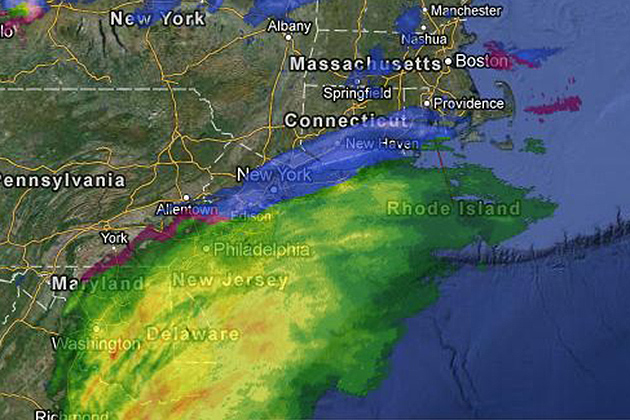
Jeremy Teitelbaum, dean of the College of Liberal Arts and Sciences, is a guest contributor to UConn Today. Read his previous posts.
Friday morning, exactly as predicted, the first flakes of snow began to fall near my house in Coventry, Conn. The millions of us who live in the Northeast Corridor were prepared for a potentially record-breaking blizzard, and over the next 24 hours we watched that blizzard do exactly what the forecasters had predicted.
Accounting for Hurricane Sandy, this was the second time in the past six months that forecasters predicted catastrophic events with astonishing accuracy, saving lives and preventing even more devastating property damage. I think it appropriate to celebrate their achievements. I therefore propose creating a new holiday, to be celebrated every year on Feb. 8, the anniversary of this storm, and to be called National Numerical Solutions to the Navier-Stokes Partial Differential Equations Day.
The Navier-Stokes partial differential equations, named after their discoverers, the 19th-century mathematicians George Gabriel Stokes and Claude-Louis Navier, govern the motion of a general fluid. Although one can write the equations very compactly using modern mathematical notation, they contain within them the full range of turbulent behavior that occurs in moving fluids, in settings as varied as airflow over a wing, water waves on a beach, and, of course, the weather.
The complexity of the Navier-Stokes equations means that one cannot hope to write down solutions for them. Instead, scientists and engineers use computer programs to construct approximations to solutions; the “European Model” that has been cited recently in weather forecasts is such a computer program.
While there is no question that such a model is an interdisciplinary triumph, with physicists, engineers, computer scientists, statisticians, a whole range of environmental scientists, and mathematicians working together to collect data, write code, and test the output of the model against reality, without the Navier-Stokes equations there would be no place to begin.
One of the ironic features of the Navier-Stokes equations is that, despite their enormous influence in applied mathematics, they are not understood from a theoretical perspective. Confronted with a system of partial differential equations, the first question that mathematicians ask about them is whether or not one can be sure that the equations have a solution in the first place. In the case of the Navier-Stokes equations, the question of whether or not solutions always exist is unsolved. Indeed, establishing the existence (or non-existence) of such solutions is one of the seven Clay Foundation Millennium problems, and solving it carries a prize of $1,000,000.
Whether or not we can solve the mathematical problem of the existence of solutions to Navier-Stokes, we can see the existence of solutions all around us in the working of the weather and the flow of water. The astonishing accuracy of weather forecasting that we are witnessing is another vindication of what Eugene Wigner called “the unreasonable effectiveness of mathematics in the physical sciences.”
Given the life-saving power of those forecasts, as well as the many other technological advances that stem from the ever-improving ability to approximate solutions of the Navier-Stokes equations, I know that you’ll join me in calling for the establishment of National Numerical Solutions to the Navier-Stokes Partial Differential Equations Day.



